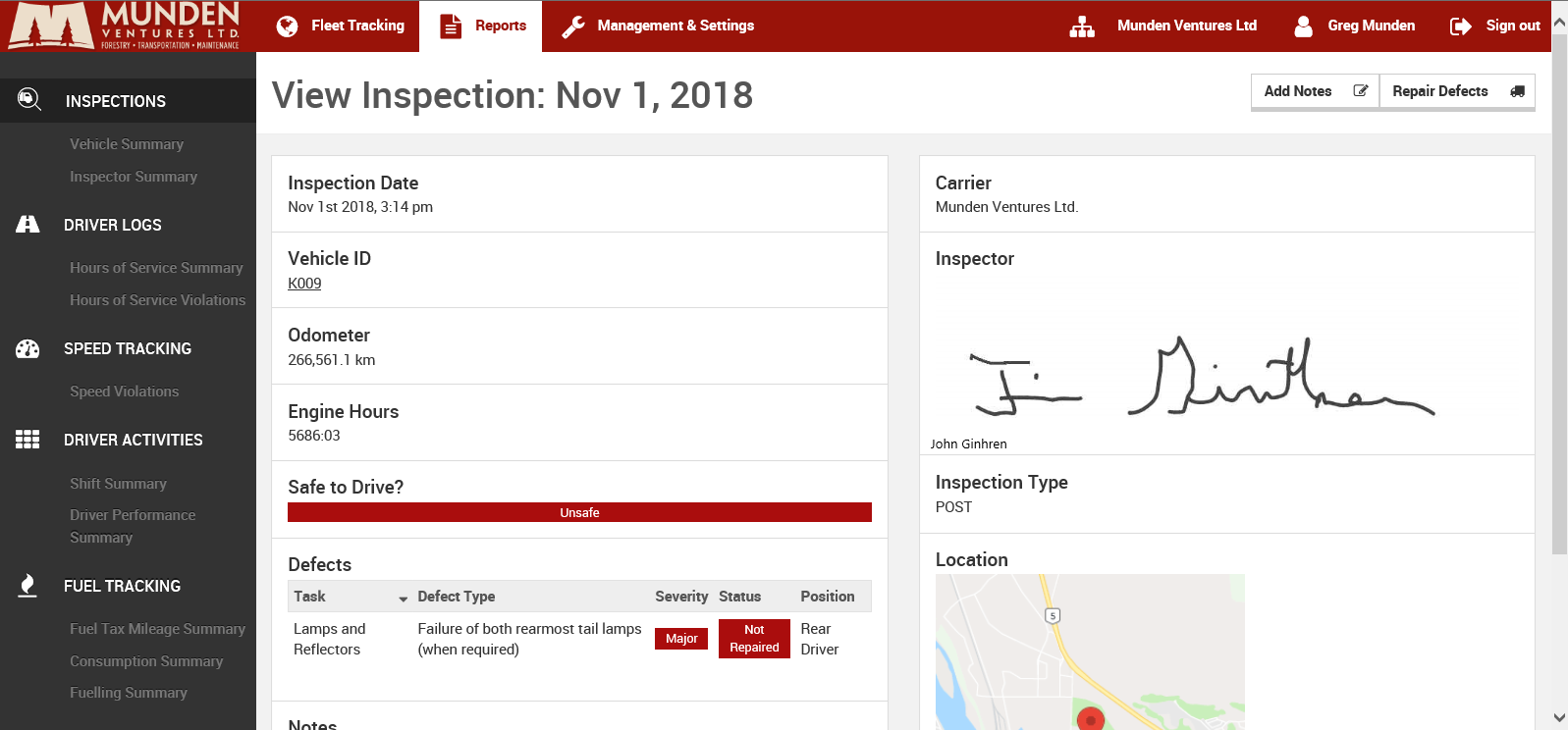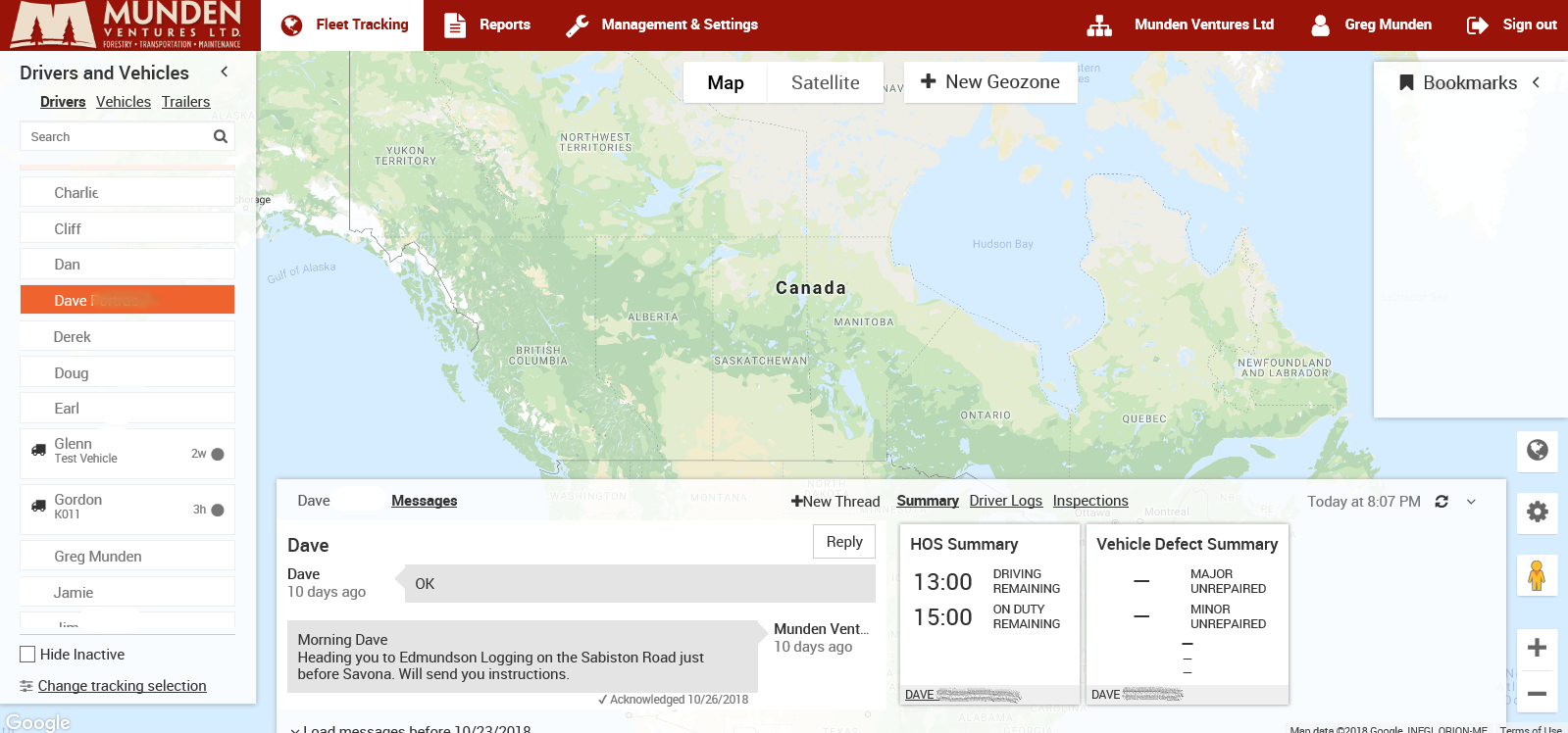 With the apparent impending passing of regulation mandating the use of Electronic Logging Devices (ELD’s) late next year in Canada, many Canadian trucking companies are only just now beginning to search out solutions to comply. Fortunately, or unfortunately, depending on your perspective, the market place is full of solution providers.
With the apparent impending passing of regulation mandating the use of Electronic Logging Devices (ELD’s) late next year in Canada, many Canadian trucking companies are only just now beginning to search out solutions to comply. Fortunately, or unfortunately, depending on your perspective, the market place is full of solution providers.
This blog is intended to the relay our experience of implementing ELD’s in a small Canadian trucking company. It is an unbiased set of suggestions and lessons learned (sometimes the hard way) about what you might want to consider when going through the process of ELOG implementation.
Included in this Blog will be access to our suggestions for:
Part 1 - ELOGs versus EOBRs - what's the difference?
Part 2 - Operational realities (and opportunities) of moving to ELOGs.
Part 3 - Finding a software and hardware supplier;
Part 4 - Implementation and Driver buy-in;
Part 5 - Harnessing the Power of an ELOG/Telematics System
Part 6 - Telematics Features and Capabilities
Part 5 - Harnessing the Power of an ELOG/Telematics System
There are some key features that, in our experience, are must-haves when it comes to an ELOG solution:
Exception Reporting
Eluded to in an earlier section, one of the great advantages from a management perspective with electronics, is the ability for the system to weed out the data that needs no attention from the data that needs your attention. With ELOGs, the only logbooks that are critically important are the ones that don't comply with hours of service regulations. A good ELOG software package will bring those logbooks to your attention so that you don't have to seek them out. This is a huge management time-saver.
Pre/Post Trip Inspections
Strong ELOG solutions incorporate a robust pre/post trip reporting capability with the software. Remember, our goal is do away with the paper logbook, and anything that goes along with it, including the vehicle inspection reports. They really go hand-in-hand, and you ELOG system should allow your drivers to complete their daily vehicle inspections online, within the system. Once again, units that are inspected that have defects, should be easily identified by the system, without your maintenance department having to look hard to find them.

Hours of Service Reporting
Your ELOG system needs to have an easy way for both management and your drivers to access previous days' log books, both for personal use and for providing to CVSE if required. Understanding for how long your ELOG provider stores this information is important, both practically and legally. Logbooks must be maintained for viewing for 6 months for CVSE purposes. If you use logbooks as a means for calculating payroll, they may be needed for 7 years.
Storage of Personal Information
Knowing where the personal information for your business and, most importantly, for your drivers, is very important. Do your homework here, but you may be contravening your employee's personal information rights if their ELOG information is stored outside of Canada.
Location Mapping and Two-Way Communication
Okay, we're straddling the fence here on whether this is an ELOG solution or an EOBR solution. Regardless, if you are only opting for an ELOG solution, having the capability to track your vehicles on a map in your back-office, and having two-way communication via text from the office to your drivers and back through your onboard system is a huge asset. Try to ensure this is an included feature on any system you purchase.

Logbook Editing
ELOG systems must still include the ability for the driver to edit his logbook if a mistake is made. There are very specific requirements about how an electronic logbook can be edited and what can be edited (for instance, it is believed that the final ruling will not allow for the editing of On Duty, Driving time). Compliant ELOG systems must have an audit trail built in to them to highlight anything within a logbook that has been edited, and by whom. For example, early in our implementation we regularly had drivers forget to Log Off at the end of their shift, leaving themselves On-Duty, Not Driving for their entire off-duty time while they were at home. An inability to edit the logbook would have meant they couldn't go to work the next day.
If you found what you’ve just read to be valuable, then I’m sure you’ll enjoy reading the other five parts of this blog series. You can fill out the simple form below and I’ll be happy to email you a PDF of all 6 parts of this series.
Our journey to implement electronic logbooks in all our trucks was not without its ups and downs. Certainly, the most challenging part was getting all our drivers to embrace and use the new technology. If you want to have a chat sometime about how we went about getting buy in from all our drivers feel free to give me a call at 250.828.2821 or drop me an email gmunden@mundentrucking.ca.
All the best, Greg Munden.


 The latest happenings and news from Munden Ventures LTD.
The latest happenings and news from Munden Ventures LTD.